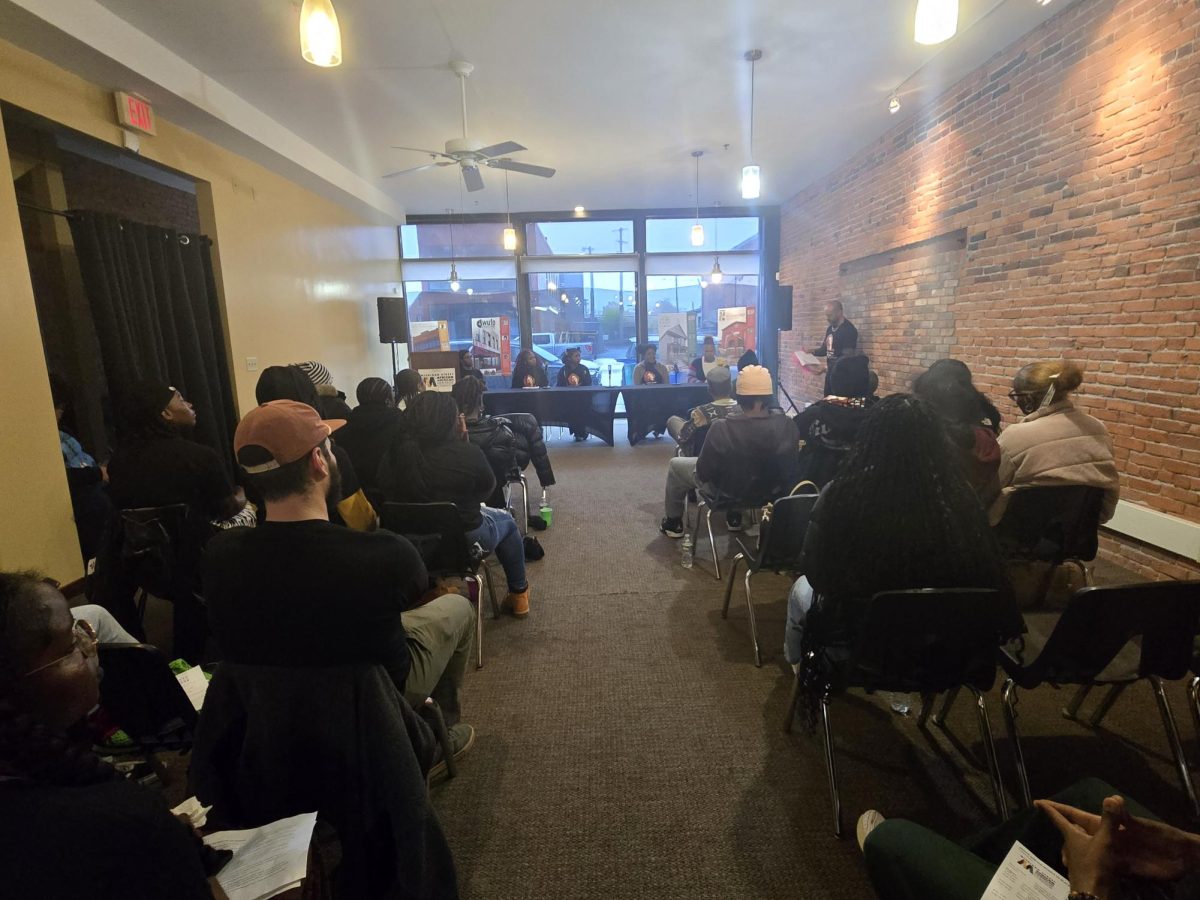Revisiting: “Ghost World”
April 18, 2021
Growing up is tough. There’s a moment when you realize all of your former peers you used to look down upon are actually more happier with their lives than you are.
“Ghost World” is a residual from the grunge era—a time where existential dread was a catchy hook — and a style.
Imagine all the allure of believing was really a sign of fear of disappearing relevance. Imagine all that you thought was right was actually created as a means to exploit and castigate.
Then you take those ideas upon yourself, not realizing it makes you look like a jerk.
Enid personifies a cynical worldview and judgemental put-downs are a way to project her superiority. She doesn’t realize that this only results in widening alienation and despair as the people she rags end up leaving her in the dust and moving on with their lives.
There are two reasons for this. One is the most direct in that no one likes to be judged and toyed with as they live their lives. The second reason is in a hyper-capitalist society like the United States, being an outsider who is wise to the mechanisms of power ironically may not get you as far socially as everyone around you is playing the game you already dissected and dismissed.
It may come off as gauche when you do this as this is not a system you’re attacking — you’re now attacking their way of life or the meaning of their lives.
This character may remind you of one of the flagship shows of the grunge era, “Daria”. The main character is one who talks in monotone inflection, who is hesitant to participate in social events her friends invite her to, and understands societial ills and the willingness for others to partake in said socieital ills.
For Daria, this comes from a place of ennui and frustration of how the world works.
Her sarcastic and sardonic wit is off putting to most, and even worse, whatever she has worth saying is not received. What Daria was missing all along was a meaningful outlet to express the dread.
As Enid barely transitions for high school to adult life, she finds herself in a bind. She has to go to summer school to repeat an art class. This is one way her false sense of superiority gets the best of her.
She’s very bright, but couldn’t bring herself to pass a high school art class. This may have been a crack of light in that she finally found an outlet to express her dread. This task is marred by her using a racist piece of art as part of a final project, and it ends up being scrapped and she fails the class, again.
This follows the simultaneous gaining of a friend, Seymour, and losing a friend, Rebecca. Rebecca was a friend throughout high school, and the more open-minded of the duo. She regularly takes chances to live a better life each day through getting a job, finding an apartment, and making plenty of friends.
Enid finds herself increasingly incompatible with Rebecca, as she interprets the things she’s doing as settling and boring. When trying to save money to move in with Rebecca, Enid manages to get fired on the first day because of her overbearing sarcasm and judgement towards customers.
Seymour is a middle-aged recluse who is a connoisseur of vintage blues records and a collector of old ads from his place of business, one of which is what Enid uses for her final project. Enid introduces herself through a prank call, responding to an ad Seymour put in the paper to meet women.
After a more formal introduction, they become friends. They both find solace in thrift shops, vintage records. It is a symbiotic relationship where Enid decides to help Seymour meet women, and Seymour is a reprieve for Enid who has given up on connecting with the outside world.
For me, their relationship was too on point, the one-night-stand she has with Seymour was too obvious.
When she successfully helps Seymour find a woman, she is once again left in the dust, with no one to share or impose her dread upon.
It’s a cycle that is gruelling for Enid, and even more painful for this viewer. In the beginning, I wanted her to win, or at least come to a mature understanding that puts a bow on this otherwise dreadful movie.
I didn’t get what I wanted, but I got what I needed. After her string of failures and shortcomings, she reflects on the damage she’s caused herself and others. The ending makes you wonder where do all the dreadful people go?
There may be an answer to that. In an alternate universe, I see the author and essayist Lindsay Ellis as a reincarnation of Enid. There’s still the intelligence and the sarcastic wit, but it is channeled in a productive way that backs up said intelligence and sarcasm, while remaining humble enough to take opportunities to grow and expand to make life more fulfilling for one’s self.
This idea is shared with fans of Full Metal Jacket who see Animal Mother as a reincarnation of Private Pyle.
The iconoclasm the character attempts with her gothic attire, her varied make-up, her tastes, and her humor falls short because it is not for the pursuit of living on her own terms or being a good person, it is for the pursuit of looking better than others. This is the archetype for the dark side of wokeness today.
It’s even more obvious today than it was in 2001 or 1997 because the work of marketing executives who cultivated the image of what grunge was, what edgy was, and what woke is has caused their legitimate meanings to be stigmatized and trivialized.
It’s more of a brand, instead of a movement. No one’s interested in a brand that doesn’t bring people together.




